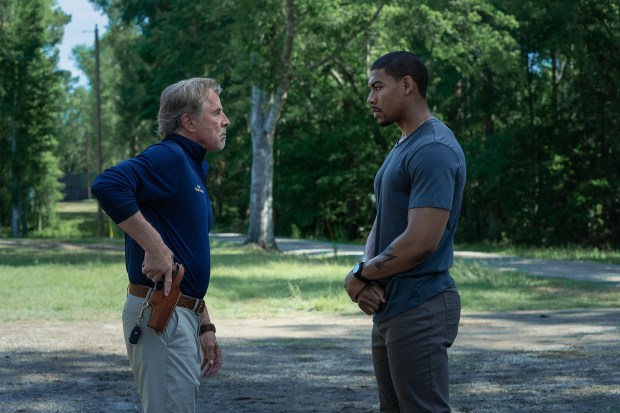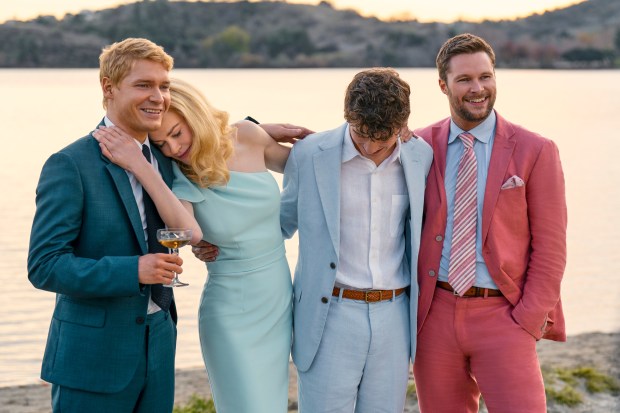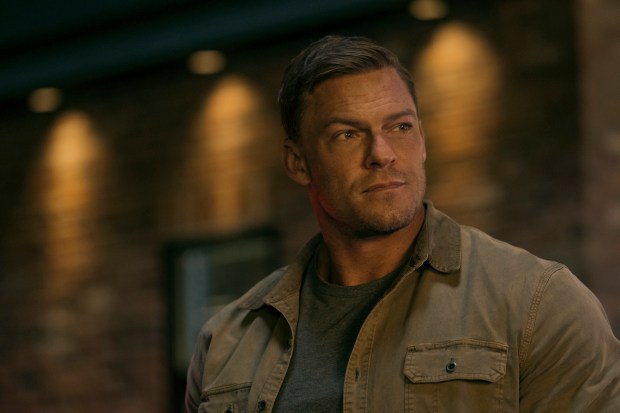As a producer of television, Amazon has had extraordinary success adapting the Harry Bosch book series by Michael Connelly, as well as the Jack Reacher book series by Lee Child. New seasons of both are expected sometime next year, and they are often referred to as “Dad TV” because of their stolid, no-baloney leads who rely on their patience and intelligence until it’s time to rely on some unflinching firepower.
It’s true, plenty of dads gravitate to these portrayals. Plenty of moms too. Also: People with no children. That’s because these shows are aimed at a general audience, which is a far more useful way to understand who is drawn to — and watching — different kinds of TV and film.
Maybe your first response is: Who cares? But I think it’s helpful to recognize what was once considered entertainment for a wider audience — and why that actually still remains the case, despite the intense compartmentalization you see every time you log onto a streaming platform. Segmenting audiences by demographics is nothing new. I’m just arguing that it’s usually too reductive to be meaningful.
Let’s go back to 1970. The No.1 movie at the box office was the romantic tearjerker “Love Story,” starring Ryan O’Neal and Ali MacGraw. Movies about relationships are often dismissed as only of interest to women. But there’s no way a film becomes the top-grossing title if it’s only “for” one segment of the audience.
In 1971, the No. 1 movie was “Fiddler on the Roof.” Considering the way studios have bent over backward to market their recent movie musicals as anything but … well, that’s an interesting footnote. Coming in at No. 3 was “The French Connection,” which is all about brawn and action. A year later, the No. 1 movie was “The Godfather” (more brawn and action) and the No. 3 movie was “What’s Up, Doc” (Ryan O’Neal once again, this time in a screwball comedy opposite Barbra Streisand).
Flash forward to 1990: The top two movies were “Ghost” and “Pretty Woman.” General audience fare was still going strong! But it wouldn’t last. By the late 2010s, a full-on IP blockbusterification had taken hold in theaters, not because audiences had changed but the movie business had.
Arthouse projects and bombastic spectacles have their place, but working in a tried-and-true recognizable form and doing it well? That’s always going to be a reliable audience-pleaser. So we’ve been left looking to streamers to fill those gaps, even if media executives don’t like to use the phrase “general audience.”
Netflix prefers the term “gourmet cheeseburger.” Whatever. But it recently premiered two different titles that fit this description: “The Perfect Couple” (a six-episode murder mystery adapted from author Elin Hilderbrand’s beach read) and “Rebel Ridge” (an original movie idea that riffs on Western standoffs of old from writer-director Jeremy Saulnier). They have nothing in common in terms of tone or genre, but they are executed with considerable skill and talent. And, tellingly, both are aimed squarely at a general audience.
“Rebel Ridge” is the story of an ex-Marine (a star-making performance from Aaron Pierre) who rides into a small Southern town on his bicycle with a backpack full of cash. It’s bail money for his cousin. A racist police department, led by Don Johnson as the chief, impedes his efforts within the film’s first moments, harassing him and seizing his money under the guise of asset forfeiture. Righting this wrong — it’s a journey of vengeance! — is what follows, but not before a John Grisham-esque legal potboiler unfolds.

The movie has been likened to 1982’s “First Blood,” but despite a similar premise, this one feels better geared to a wider audience. (Not that “First Blood” didn’t draw a crowd; it was No. 13 at the box office the year it came out.) The violence in “Rebel Ridge” is carefully parceled out in bursts, and there’s a grounded realism to the fight choreography. It’s not fancy, it’s not slick, it’s not prolonged. But it’s good action work. Even so, that isn’t the real calling card here. There’s a lot of emphasis in the early going on tense but quiet conversations — showdowns, really — between Pierre and Johnson. Saulnier’s direction is so smart in this regard and it makes the movie engrossing and watchable.
Retribution is on the menu, but specifically the non-fatal kind. That’s because Saulnier gave himself a challenge when writing the script: “Can I get through a screenplay without killing everybody in it?” he said in a recent interview. “When we premiere it, it’s going to be the whole family there, including my mom.”
He’s describing — you guessed it — a general audience. And it’s on track to become one of Netflix’s most watched movies. I’m just happy that it’s actually good, unlike so many other Netflix movies on its most-watched list.
By contrast, “The Perfect Couple” centers around the death of a bridesmaid, whose body is discovered the morning of an expensive Nantucket wedding. In structure and form, the story is an Agatha Christie manor house mystery given a contemporary American sensibility. Christie was writing for the masses and she understood the mechanics of this sort of thing: Gather together a group of rich people as your possible subjects and be sure to give them enough secrets and entitlement that audiences will be happy to see any one of them go down for the murder. Cast a household name like Nicole Kidman to bring a winking professionalism to the absurdity of it all, and you’ve got a general audience corker.
No surprise, it was the most watched series on Netflix when it premiered earlier this month.
Unlike the “Star Wars” franchise or comic book adaptations, with both “The Perfect Couple” and “Rebel Ridge,” you don’t need to know any background lore to follow these stories.

If Hollywood has narrowed its interest to reboots and blockbusters in recent years, it’s not because audiences wanted it that way. In fact, audiences keep making it clear what they want, and it’s why library shows — older TV series that originally aired on network TV, that one-time bastion of general audience fare — remain among the top performers on streaming platforms. For Netflix, the most recent example is “Prison Break,” a series that’s nearly 20 years old at this point.
“People often ask me if we need so many movies and TV shows on Netflix,” CEO Ted Sarandos said recently. “I always answer with an emphatic yes. People have such different and eclectic tastes that you can’t afford to program for just one sensibility.”
I had to laugh. Beware the media executive who delivers conventional wisdom as if it were a new discovery, instead of the guiding principle followed by studio heads and network presidents of decades past.
Nina Metz is a Tribune critic.




